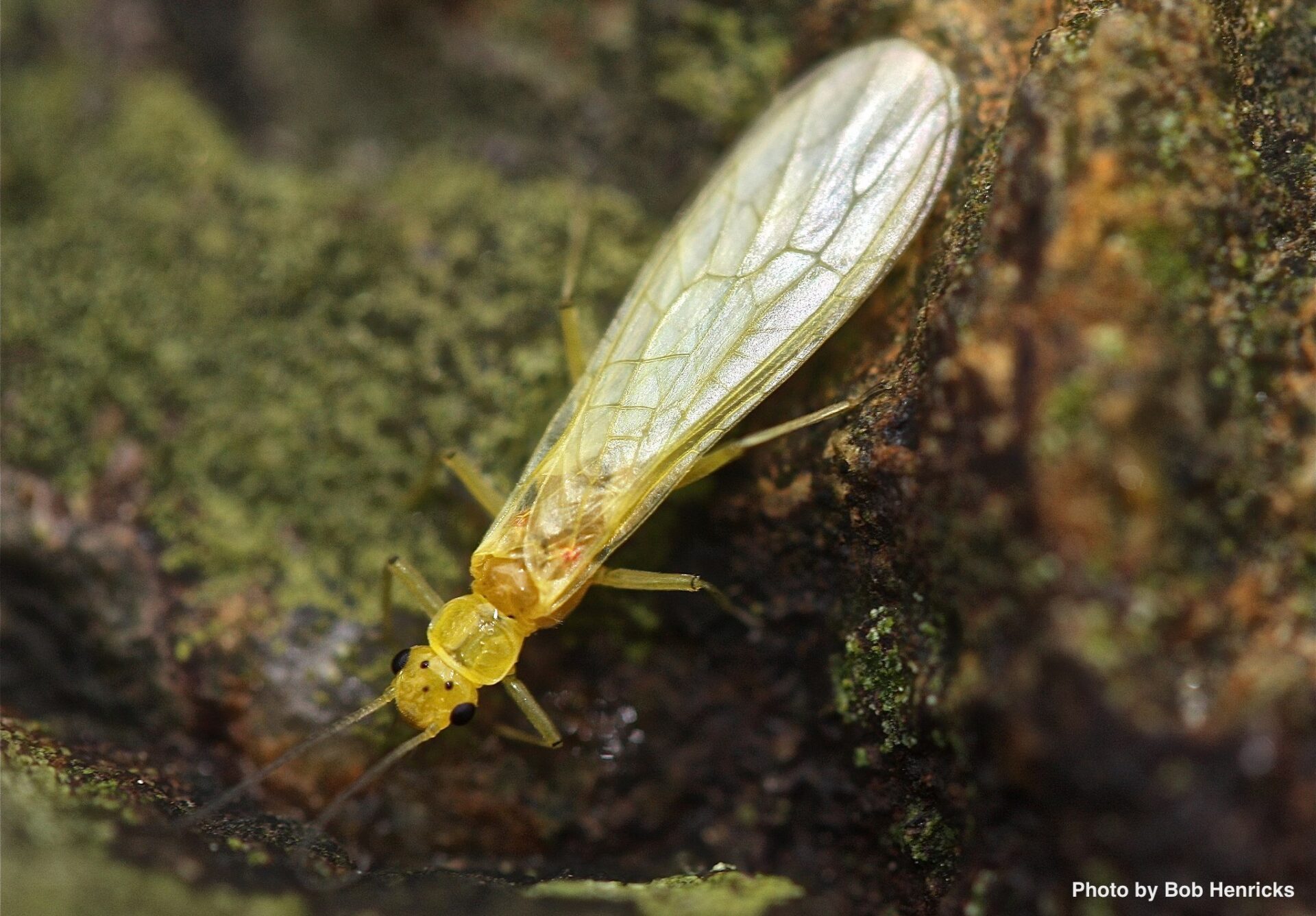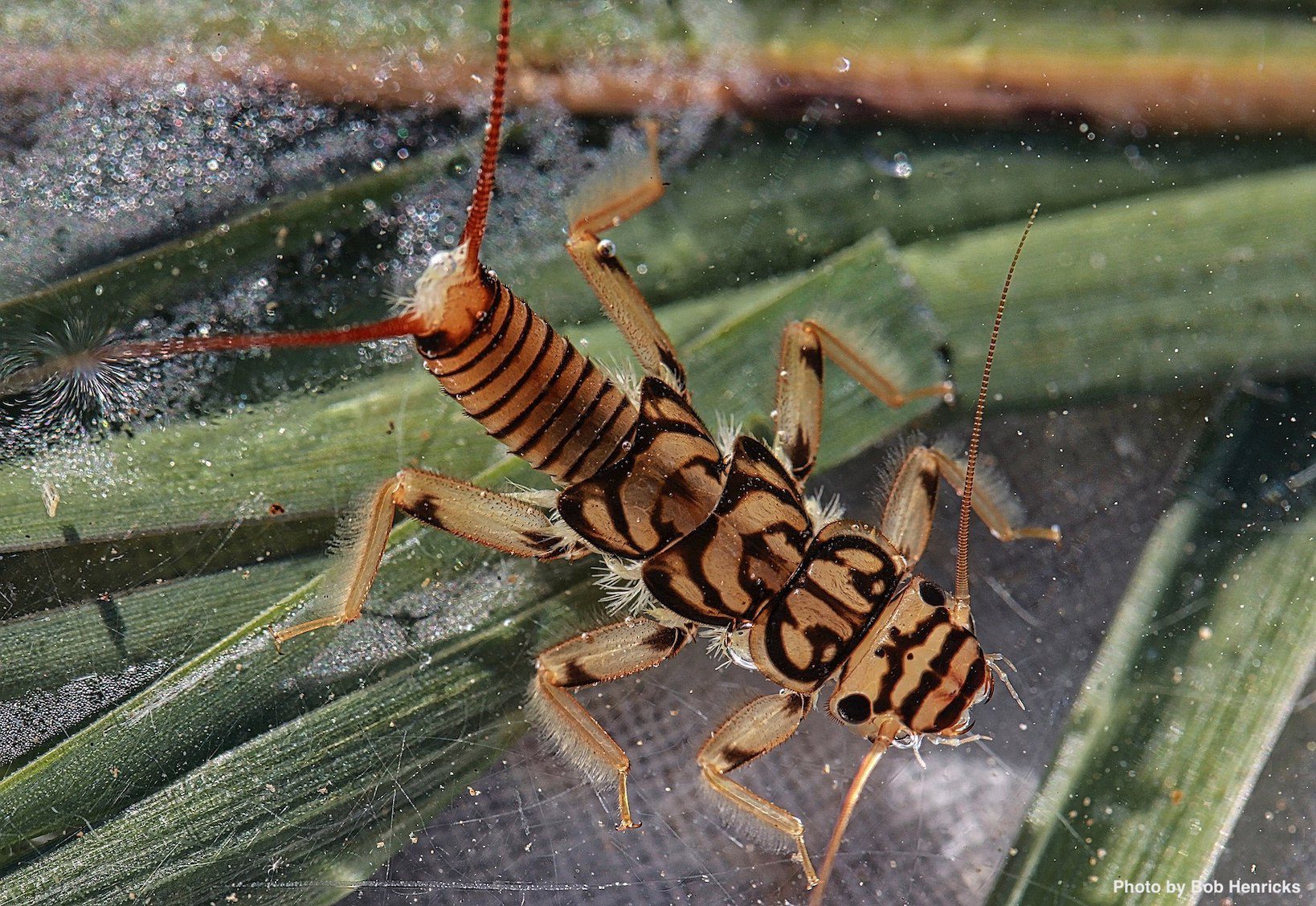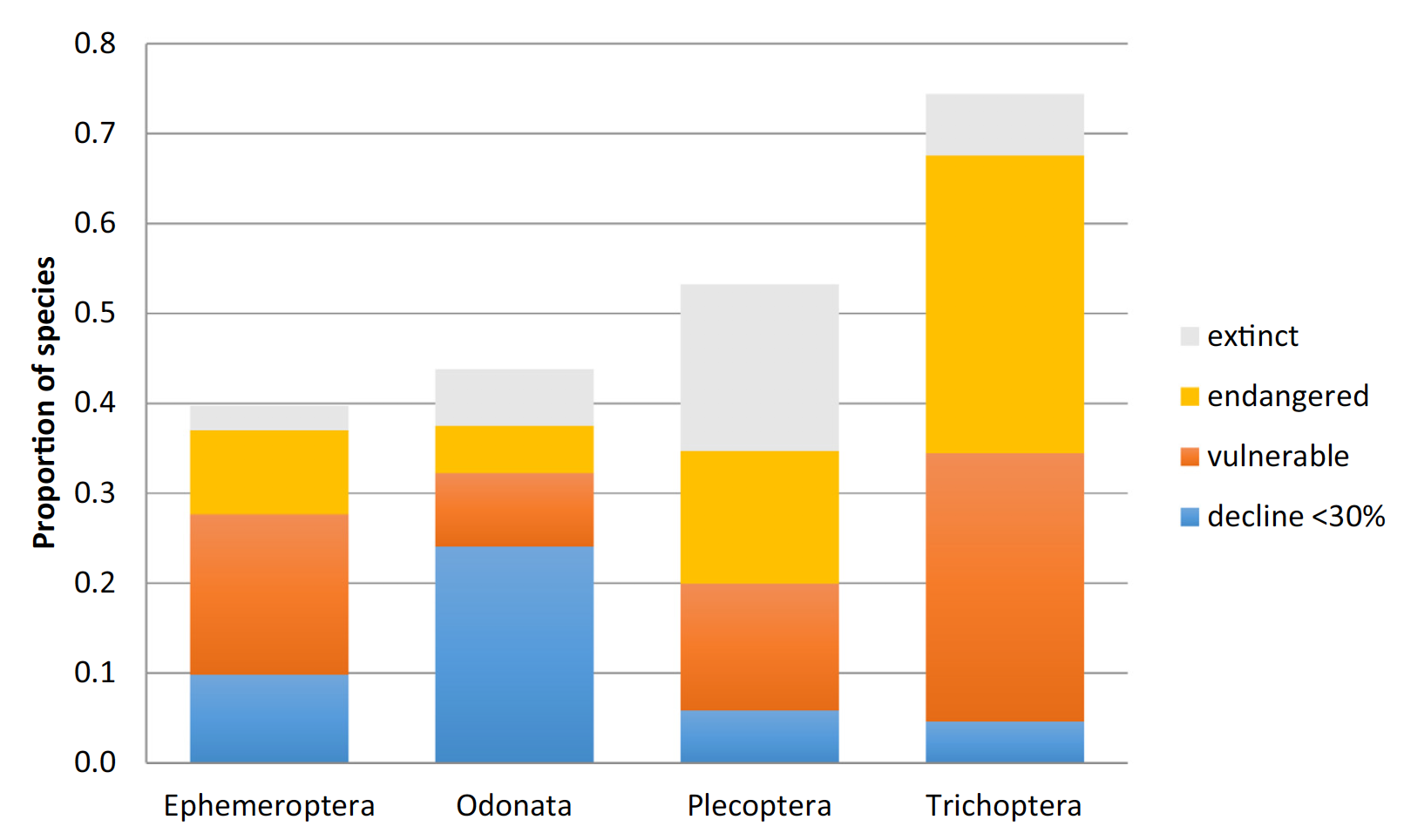Wednesday March 27, 2019

Even the most inconspicuous insects can play a vital role in rivers and streams. The lowly stonefly (Order Plecoptera) spends all but the last few weeks of its life hiding its flattened body among the stones of the streambed. Yet these unassuming bugs are a major component of many freshwater environments, accounting for as much as 10% of the invertebrates produced in some rocky streams. Their abundance makes them a favorite food item of sportfish like trout and bass, but their role in the food web doesn’t end there. As nymphs, stoneflies have as many as 30 stages of development, or instars, and spend up to three years feeding on algae, detritus, and other invertebrates. When they molt one last time and emerge from the water as adults, they often no longer have mouthparts, and will live out the remainder of their days seeking to achieve their life-long goal of mating. Because of their preference for clean, cold, flowing water, this order of insects has been significantly affected by human-driven changes to the landscape. As a result, they have declined dramatically in streams and lakes around the world, and are considered the most at-risk group of insects in North America.

Stoneflies have narrow ecological requirements, meaning they are often cannot tolerate even relatively minor changes to water quality. Furthermore, they have a high degree of endemism, meaning that many species are unique to very specific locations (such as a mountain stream or an alpine lake). These two traits have made stoneflies particularly susceptible to human development of watersheds and to climate change. In fact, up to 63% of Plecoptera species found in Europe, particularly those found at high altitudes, are vulnerable to climate change. The proportion of threatened stonefly species has reached levels as high as 50% in Switzerland, and similarly distressing trends have been observed in other countries. A study in the Czech Republic comparing Plecoptera surveys from 1955–1960 with surveys from 2006–2010 found that 12% of 78 species had been lost, and 22% had declined in abundance by more than half. Similarly, in the state of Illinois, 29% of the 77 historically present stonefly species are gone, and 62% of those that remain are threatened. Throughout Europe and the United States, studies suggest that half of the stonefly species occurring in areas of industrial and agricultural development were extirpated between the 1940s and the 1980s. The role of stoneflies as both essential fish food and streambed predator means their existence is vital in the maintenance of a stable food web. Fortunately, there is evidence that taking steps to mitigate pollution can result in the recovery of some species. Reducing the influx of pollutants and allowing natural flows where possible will help stoneflies continue to keep stream ecosystems healthy and trout bellies full.
 Graph from Sánchez-Bayo and Wyckhuys 2019 showing the proportion of aquatic insect species in decline or locally extinct.
Graph from Sánchez-Bayo and Wyckhuys 2019 showing the proportion of aquatic insect species in decline or locally extinct.
This blog series is based on a recent study that compiled long-term surveys from the past 40 years and revealed a staggering worldwide decline in insect species (Sánchez-Bayo and Wyckhuys 2019). Among the most affected insects are those that spend a portion of their life cycle in fresh water, namely Odonata (dragon and damselflies), Plecoptera (stoneflies), Trichoptera (caddisflies), and Ephemeroptera (mayflies). In this series we delve deeper into the declines of these insect groups, and their importance in freshwater environments.
